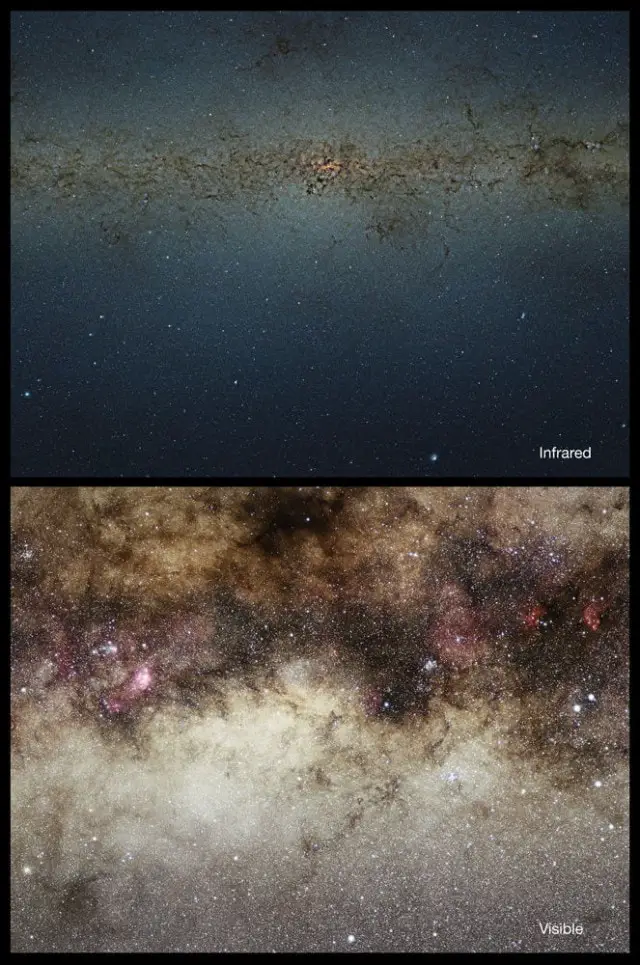However,
thanks to the VISTA telescope we got one of the most detail portraits of the
Milky Way EVER produced which has allowed astronomers to catalog a staggering
84 million stars. After seeing this image, ask yourself.. are we alone in the
Milky Way? The above image is just a small, reduced—thumbanil version of the
original image which has a mind-boggling resolution of 108,500×81,500—or if you
prefer 9 gigapixels, occupying 24.6 gigabytes.
If for some
reason you want to download the 24.6-gigabyte image you can do so by clicking
here. Check out the ENTIRE 9-gigapixel image—and zoom in on those stars—byclicking here. This image is simply too big to be displayed at full resolution
and is best appreciated using the zoom tool.
In order to
obtain this image, ESO’s VISTA telescope—which stands for Visible and Infrared
Survey Telescope for Astronomy—snapped thousands of images of the sky after
which astronomers compiled them into one 9 gigapixel mosaic. The Vista
telescope is one of the LARGEST visible and near infrared telescopes on the
planet, and it just showed us how cool it really is which this mind-bending
image.
The image
you are seeing is crystal clear because the VISTA telescope boasts a stunning
infrared camera which enables it to peer through the dust clouds that obscure
the view of other telescopes. In order to understand how powerful the VISTA
telescope really is, here below is a comparison between an image of the Milky
Way—the same image—as seen from an infrared telescope and a visible telescope.
Pretty
amazing right? Just imagine what else is out there? The Milky Way galaxy is
really unique, it’s beautiful and this image makes you love our cosmic home
even more, right? But this image wasn’t taken just for aesthetic purposes. In
fact, this massive image has allowed scientists and astronomers to identify
numerous cosmic objects in space that are worth researching further.
This image
allowed astronomers to identify 84 million stars in the Milky Way. Our cosmic
home—the Milky Way—is part of a supermassive structure interconnected by over
800 galaxies located at around 1000 million light years away. Our galaxy ispart of an intergalactic highway that stretches some 500 million light years
across and contains around 100,000,000,000,000,000 Suns, dubbed by scientists
as Laniakea.
Oh and, just
a fun fact here, did you know that astronomers maintain that there are around
500 billion galaxies in the known universe, which means there are around
50,000,000,000,000,000,000,000 (5×1022) habitable planets. Astronomers argue
that just inside our Milky Way Galaxy, there are some 400 BILLION STARS.


Comments
Post a Comment